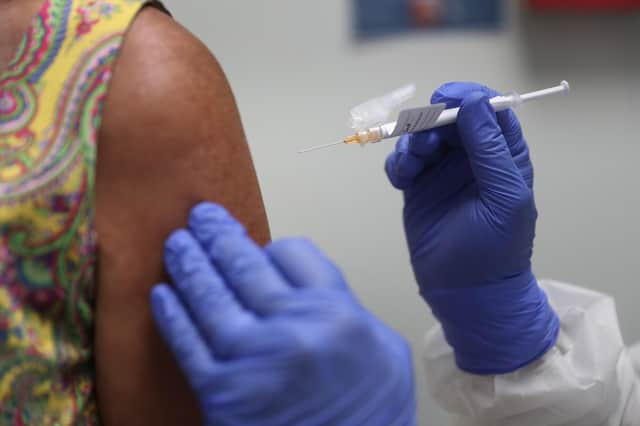Vaccines against cancer-causing viruses are a growing source of hope – Professor Dorothy H Crawford


In contrast to acute infections, many viruses silently infect our bodies and reside within us for life. Some are completely harmless, others cause chronic disease, and on rare occasions some of these viruses can turn nasty and induce tumours.
In 1964, the first human tumour-inducing virus was discovered by London-based virologist Anthony Epstein (now Sir Anthony). The discovery began when Epstein attended a lecture by Denis Burkitt, a British surgeon working in Uganda, where he described the most common childhood tumour diagnosed in his clinic. It usually occurred in the jaw, was rapidly fatal if untreated, and was restricted to patients in low-lying areas in central Africa.
Advertisement
Hide AdAdvertisement
Hide AdEpstein was convinced this tumour was caused by a virus, and after two years’ work on biopsy material sent from Burkitt’s clinic in Africa, he was proved right. By culturing cells from the tumours – later named Burkitt’s lymphoma – and examining them using electron microscopy, he eventually found what he was looking for – a virus. Following his discovery, it was then named the Epstein-Barr virus (EBV) after Epstein and his late graduate student, Dr Yvonne Barr.
Since those early days, six more human tumour viruses have been uncovered, with these seven now being responsible for around 15 per cent of all human cancers, including common killers such as cervical cancer in women and certain liver and stomach cancers, as well as proportion of Hodgkin’s lymphoma.
The interesting thing about tumour viruses is the number of individuals infected compared with those who later develop tumours. Tumours only affect a small proportion of cases and those which develop often only occur within a restricted geographical area, like Burkitt’s lymphoma in central Africa. They are more common in people with suppressed immunity, such as transplant recipients. All of these factors suggest other co-factors are required for tumour production.
In the case of African Burkitt’s lymphoma, we know EBV infection is ubiquitous, but the geographical prevalence of tumours largely mirrors year-round, high-frequency malaria infection. As such, it shows that childhood malaria infection induces a lack of immune control of EBV which, along with a genetic change found in the EBV-infected cells, induces tumour outgrowth.
Identifying viruses that cause tumours is not just an academic exercise, since they can act as early targets for tumour prevention and therapy. In this regard, experimental immunotherapy has successfully treated EBV-associated tumours in transplant recipients.
There are also early examples of success in vaccination against the papilloma viruses mostly responsible for cervical cancer. Since beginning in the UK in 2008, vaccinations have already produced a dramatic drop in infection rates and potential cancerous tumours among the immunised cohort. As ongoing research hits the clinic, I am confident more good news will follow.
Dorothy H Crawford is emeritus professor of medical microbiology at the University of Edinburgh, an author, commentator, and fellow of the Royal Society of Edinburgh. This article expresses her own views. The RSE is Scotland's national academy, bringing great minds together to contribute to the social, cultural and economic well-being of Scotland. Find out more at rse.org.uk and @RoyalSocEd.
Comments
Want to join the conversation? Please or to comment on this article.